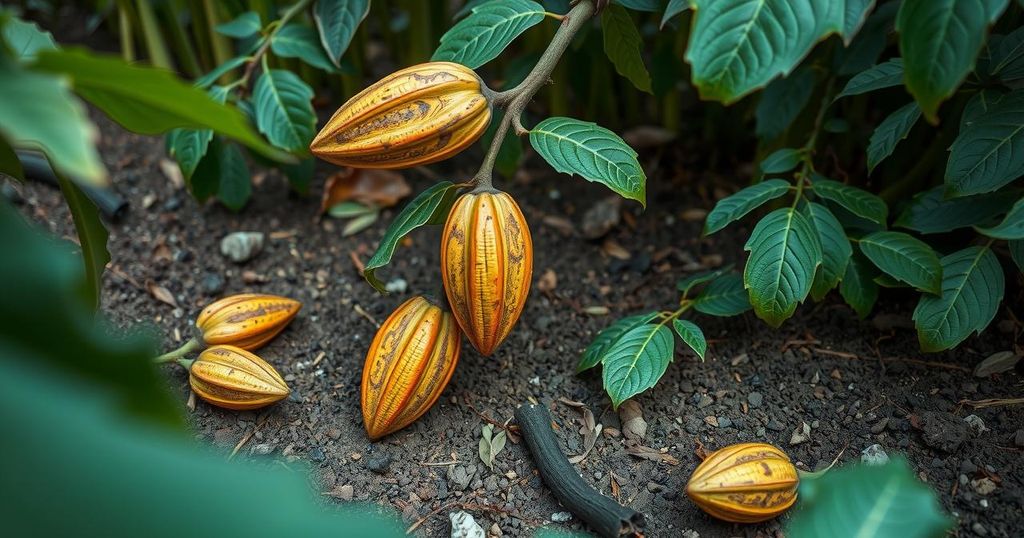The Impact of Climate Change on Valentine’s Day Chocolate Supply

American expenditure on Valentine’s Day is rising, with chocolate being a major recipient. However, cocoa production is declining due to climate change, leading to increased prices. Cacao trees, primarily grown in tropical regions, face various environmental challenges. Adaptive farming strategies and consumer support for sustainable practices are essential to address these issues and stabilize supply.
Each year, Americans increase their spending on Valentine’s Day, with expenditures reaching nearly $26 billion in 2023 and projections of over $27.5 billion for 2024. A significant portion of this spending is allocated to candy, with chocolate constituting 11.2%. During the week of Valentine’s Day, Americans are expected to consume around 58 million pounds of chocolate, yet challenges are emerging as cocoa production declines and prices escalate.
Cacao trees flourish primarily in tropical regions, particularly in Southeast Asia, Central and South America, and West Africa, the latter supplying approximately 70% of the world’s cocoa. These trees thrive under specific conditions: warm temperatures, high humidity, and consistent rainfall. The sensitive nature of cocoa production makes it vulnerable to the adverse effects of climate change, which exacerbate existing challenges in cultivation, including the lengthy time required for cacao trees to mature and produce pods.
The influence of climate change on cocoa cultivation is profound. Unpredictable weather, climate variability, and heat stress have all proven detrimental to yields. Regions experiencing droughts or excessive rainfall face severe challenges, such as increased disease prevalence and loss of soil moisture. These climatic conditions are especially evident in West Africa, where traditional growing areas are becoming increasingly inhospitable for cacao trees, prompting some farmers to seek higher altitudes, although land rights issues complicate this adaptation.
To combat the adverse effects of climate change, farmers are exploring various adaptive methods. This includes cultivating drought-resistant and disease-resistant cocoa varieties, as well as integrating cacao into mixed agroforestry systems where it can grow under the shade of other trees to stabilize temperature and moisture. Farmers are also employing improved soil and water management techniques, incorporating methods like rainwater harvesting and precision agriculture to better respond to extreme weather events.
Consumers can play a pivotal role in promoting sustainable cocoa production through their purchasing decisions. By selecting ethically sourced chocolate that carries sustainability certifications, consumers support practices that prioritize environmental responsibility and fair labor conditions for cocoa farmers. Researching how brands source their cacao ensures consumers engage with companies committed to the sustainability and fairness of their supply chains.
Rising cocoa prices are a direct result of low yields in major producing countries, such as Côte d’Ivoire and Ghana, following adverse climate conditions and diseases affecting plants. Over the past two years, cocoa prices have surged more than 300%, with prices reflecting the impacts of various interrelated factors including market speculation and the slow progress in increasing cocoa yields. Consequently, customers should expect to pay more for chocolate this Valentine’s Day.
In summary, climate change poses significant challenges to cocoa production, impacting yields and increasing prices, which subsequently affect consumer costs for products like chocolate. Sustainable farming practices and consumer support for ethically sourced chocolate are vital initiatives in mitigating these effects. As buyers navigate their Valentine’s Day purchases, understanding the importance of informed consumer choices can contribute to a more sustainable cocoa industry.
Original Source: news.climate.columbia.edu







